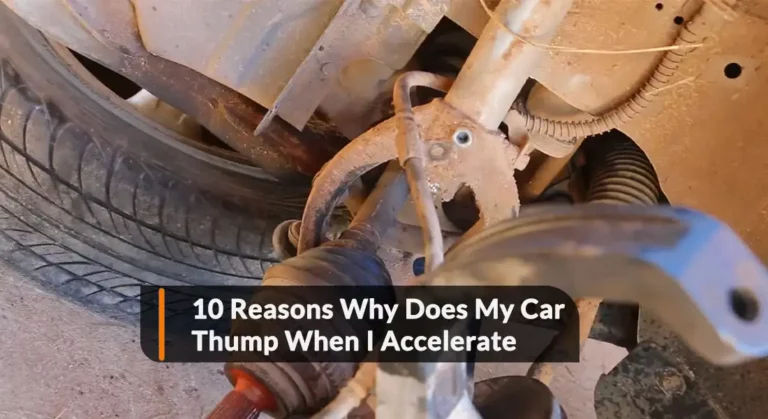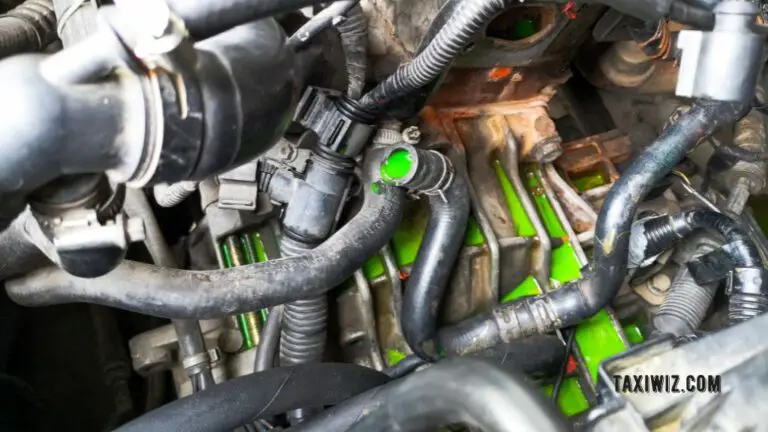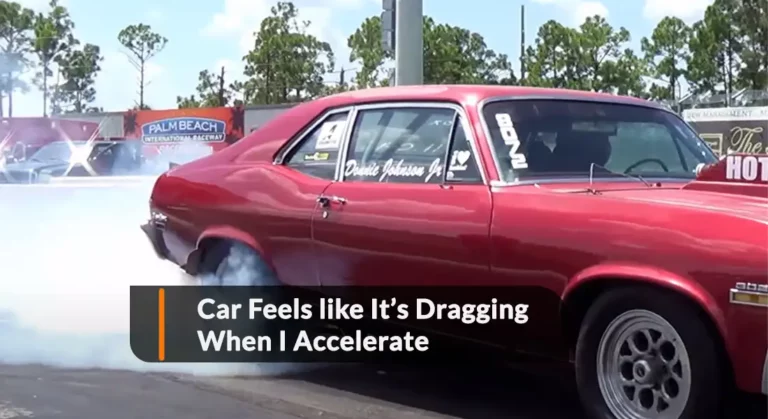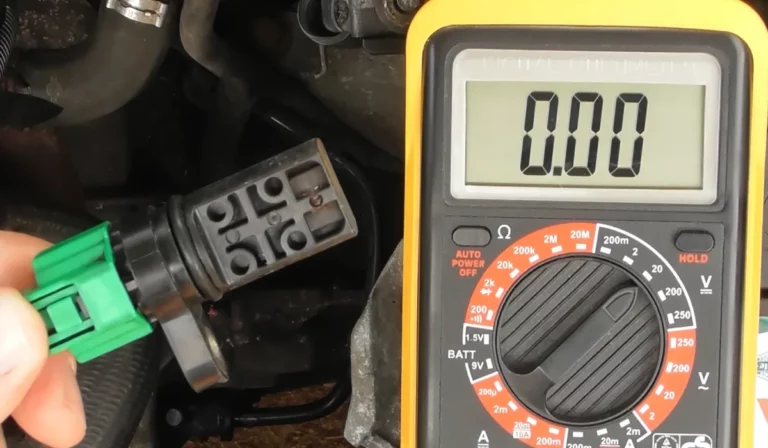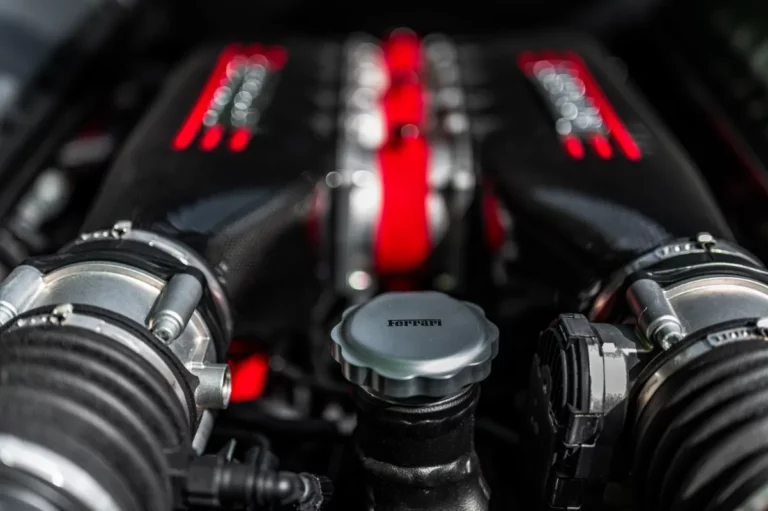How To Fix Oil Leak Between Engine and Transmission?
An oil leak between engine and transmission in a car generally involves the loss of oil from the region where the engine and transmission are linked together.
Car oil leak between the engine and transmission might be caused by:
- Transmission input shaft seal failure
- Rear main seal deterioration
- Engine oil pan gasket leakage
- Cracked bell housing
- Loose bolts connecting the engine and transmission
- Malfunctioning oil cooler.
These factors will be extensively addressed in the following article, providing you with practical solutions to the car problem.
What Is a Bell Housing and Its Purposes In the Engine and Transmission?
The bell housing is the part of an automotive system that links the engine and transmission. It is a cylindrical metal enclosure that houses the flywheel.
The primary function of the bell housing is to encapsulate the flywheel and clutch assembly in manual transmission cars or the torque converter in automatic transmission cars. It protects these components by shielding them from trash and other objects.
Various seals and gaskets are also included in the bell housing to prevent fluid leakage.
The input shaft seal keeps transmission fluid from seeping out and into the bell housing. The rear main seal keeps engine oil from escaping and entering the bell housing.
During installation, the bell housing also assists in synchronizing the engine and transmission. It aids in ensuring that the transmission’s input shaft appropriately contacts with the flywheel.
Main Reasons for Oil Leak between Engine and Transmission on the Car
Oil leaks between the engine and transmission can occur for a variety of causes. Here are some of them:
- Transmission Input Shaft Seal: The transmission input shaft seal is placed where the transmission’s input shaft joins the bell housing. It can degrade or get broken over time. Consequently, oil from the transmission may seep into the bell housing.
- Rear Main Seal: The rear main seal is located at the back of the engine where the crankshaft links to the transmission. If this seal wears out or becomes ruptured, it can cause oil leakage.
- Engine Oil Pan Gasket: The gasket that connects the engine oil pan to the engine block can weaken or leak over time. As a result, oil escapes into the bell housing.
- Poor Bell Housing Components: Oil leakage in this location can also be caused by cracked or broken bell housing. Loose fasteners or a faulty oil cooler may also be the reason.
- Excessive Oil: High pressure can build up in some circumstances if the engine oil is overfilled. It causes oil to seep out through numerous places, including the space between the engine and transmission.
- Front Pump Seal (Automatic Transmission): When the front pump seal breaks, transmission fluid might seep into the bell housing.
- Incorrectly Sealed Dipstick Tube: Oil can seep into the bell housing if the gasket or seal surrounding the dipstick tube gets old or incorrectly placed.
- Valve Cover Gasket Failure: The valve cover gaskets seal the top of the engine’s cylinder head, which contains the valves and camshafts. Oil can escape and perhaps leak into the bell housing area if these gaskets degrade or get broken.
- Defective Oil Cooler Lines: When the oil cooler lines leak, oil might escape and accumulate in the bell housing section.
- Improper Installation: Components such as seals, gaskets, or bolts may not be correctly placed or tightened during engine or transmission repairs.
How to Troubleshoot Oil Leak Between Engine and Transmission?
Once you discover oil seeping between the engine and transmission in the car, you must act quickly to prevent more damage and maintain the vehicle’s performance. Here are some strategies to consider:
1- Safety First
In order to prevent accidents or more damage, pull over to a safe spot, turn off the engine, and activate the parking brake.
2- Inspect and Confirm the Leak
Check the engine and transmission areas carefully to determine the cause of the oil leak.
Examine the engine for apparent evidence of oil pooling or dripping, as well as any damaged or outdated components.
3- Check the Oil Levels
Examine the engine oil and transmission fluid levels to see if they are severely low. If one of these values is very low, it may suggest that the leak has been continuous. The fluids should be refilled before driving the car again.
Driving with low oil or transmission fluid levels, on the other hand, is not recommended. It can cause serious engine or transmission damage.
4- Faulty Bell Housing Components
If the bell housing is fractured, change it. Tighten or replace bolts connecting the engine and transmission that are loose or damaged. To avoid oil leaking, a faulty oil cooler may need to be repaired or replaced.
5- Inspect the Engine Oil Pan Gasket
In order to replace an oil pan gasket leak, the engine oil pan must be removed. The old gasket is replaced, and the oil pan is firmly fixed to prevent oil from leaking.
6- Clean the Region
Before driving your car to a repair, you may remove any accumulated oil by cleaning the region surrounding the engine and transmission.
This technique makes it easier for the technician to locate the source of the leak and ensures a more thorough assessment.
How to Fix a Oil Seal Leak in Your Car >> Check out the video below:
What Are Some Preventive Measures for Oil Leaks Between the Engine and Transmission?
Oil leaking between the engine and the transmission is a serious issue. You must address it quickly. Here are some preventive measures to execute:
- Follow the manufacturer’s suggested maintenance system for your vehicle.
- Use high-quality engine oil and transmission fluid that meets the criteria indicated in your vehicle’s owner manual.
- Inspect and replace deteriorated seals and gaskets on a regular basis.
- Check for loose fasteners connecting the engine and transmission and tighten them as needed.
- Monitor the engine oil and transmission fluid levels on a regular basis to ensure adequate fluid levels.
- Prevent overheating since engine heating can cause seals and gaskets to fail.
- To reduce stress on engine and transmission components, use smooth and controlled driving habits.
- Keep high temperatures, road debris, and corrosive chemicals away from your car.
- Schedule expert checks on a regular basis to spot any possible problems early.
- Consider adding additional protection measures, such as skid plates or splash guards, if you often drive in extreme situations. It protects the engine and transmission from potential damage.
Oil Leak Between Engine And Transmission – FAQs
Is an oil leak between the engine and the transmission a major issue?
Yes, it is a major issue that, if left unsolved, might cause engine or transmission damage.
Can high temperatures have an impact on the occurrence of an oil spill in engine and transmission?
Extreme temperatures can worsen existing problems or hasten the deterioration of seals and gaskets, increasing the possibility of an oil leak.
How can I detect an oil leak between the engine and transmission?
Look for oil stains on the ground, visible oil accumulation in the engine and transmission area, or the odor of burning oil.

